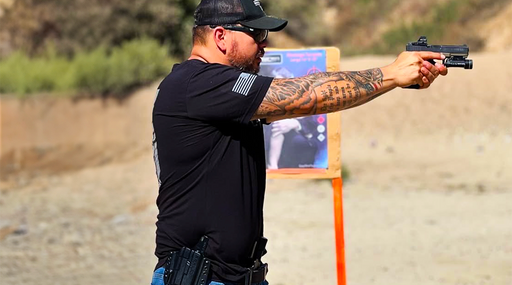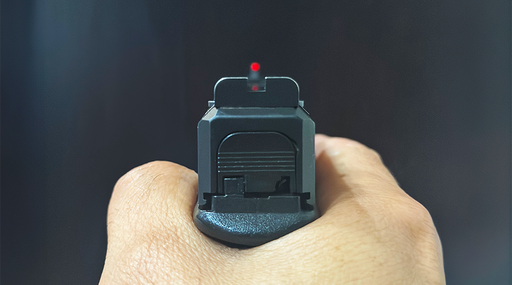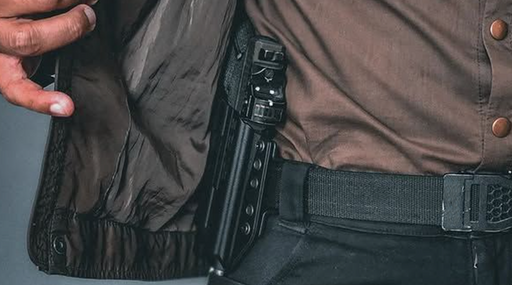 If you’re reading the Bravo Concealment Blog, chances are you already know that everyday carry (EDC) isn’t just about a gun and holster; it’s a lifestyle. And like most other sincere pursuits, there are lots of ways to spend money and time on guns and stuff. For all of us, time is precious. Here is my view of resources that should be prioritized to increase your “luck” should a violent criminal choose you or a family member as their next intended victim.
If you’re reading the Bravo Concealment Blog, chances are you already know that everyday carry (EDC) isn’t just about a gun and holster; it’s a lifestyle. And like most other sincere pursuits, there are lots of ways to spend money and time on guns and stuff. For all of us, time is precious. Here is my view of resources that should be prioritized to increase your “luck” should a violent criminal choose you or a family member as their next intended victim.
This list is formed with the assumption that a reliable handgun and holster system are already in place. Hopefully, that setup is one that allows you to carry safely on a daily basis, as well as offering ready access to your firearm. With that understood, here are things I consider to be essentials.
Ammunition

One of my first mentors in the self-protection arena said, “if you don’t have at least a thousand rounds on hand for every gun you own, you’re kidding yourself.” Over time, I’ve come to understand this as sage advice and a very conservative recommendation if you’re getting regular time on the range with your caliber(s) of choice.
Ammo supplies are stretched thin in the current economy, with no relief in sight aside for occasional and seemingly random good news that such-and-such store has a favorite caliber in stock. Many politicians who are jealous of your right to self-protection have commented in favor of increased taxes or bans on ammunition, knowing that if gun bans are ineffective, ammo regulations are perhaps even easier to implement to the same effect of rendering people helpless. Stock up and store that ammo in locked, dry storage. At today’s market prices, ammo starts around 50 cents per round for 115 grain 9 mm FMJ. Other centerfire calibers are higher. Despite inflationary prices of a couple of years ago, 22LR has come down to near previous lows. Expect to spend a minimum of $1.50 per round for defensive ammunition; sometimes much more depending on caliber.
Training

Years ago, I lost track of the number of people who, when they signed up for a concealed carry class, uttered something like, “I’ve handled guns all my life and I know how to shoot.” Experience has shown that about one in 10 of those people demonstrate both safe gun handling and good marksmanship. It doesn’t matter where you were born or what your daddy did for a living, there is no substitute for good training and holding oneself to the standards of same! And those people who boast about being a gun person since they wore diapers? They usually leave the range saying something about “I never knew x,” because none of us know everything. No matter your current skill level, training is essential to optimal EDC.
Training comes in many forms, and while it’s easy to assume while reading this I’m speaking of basic gun safety and marksmanship training, this is a lifestyle with many useful, interesting, and rewarding side roads to travel. Gun manipulation skills like drawing/re-holstering, especially from concealment, reloads, and malfunction-clearing are what separates the lax from the competent gun person. Master them. Then there are alternate defenses, like blade work and grappling skills. Knowing and honing your own tendencies of reaction under stress, including communicating with the “bad guy,” bystanders, and police, is best trained in scenario class and tested on the street, not the other way around. What about shooting in darkness? Same thing. And never neglect emergency medical training. At minimum, attend a local “Stop the Bleed” class. Better yet, attend a class that will teach you to deal with life-threatening injuries in the minutes or hours before EMS is on scene. If you’re willing to carry one life-saving device that reduces blood pressure, it’s not a big deal to carry and use another that can restore and preserve it.
About the time you think you’re well-rounded enough on the training front, a change to your daily routine or physical capabilities will likely necessitate an adjustment to the type of training that’s appropriate. View your training as a personal growth adventure, and you’ll never run out of things to do while netting useful skills and a broader understanding of yourself and others. Training prices vary widely; prices start at $75 for a half-day course at most local ranges and can be up to $350 per day with a big-name instructor. Some training, like Stop the Bleed, can be found free of charge, though equipping yourself with the tools to use the training often has a cost.
Blades

At minimum, a quality folding blade should accompany you everywhere you can legally take it. If you’re serious about staying out of physical trouble in general, a blade is the tool around which that philosophy is built. As with guns, the more experience you have with blades, the greater your understanding of the best choices of products are for you. For most people, a fixed blade in addition to a folder is the next logical step. A $25 folder can get you through a lot of life. Prices go up from there, with the average EDC fixed blade starting in the $150 range.

This is one aspect of defensive living that has an extremely low-cost entry point, so there’s no excuse not to have, at minimum, a pocket-, waistband-, or even bra-borne folder on hand daily. You’ll find yourself using it much more than you ever expected. You’ll find it makes you better at a myriad of tasks done for the benefit of yourself and the non-blade-carrying people around you. Furthermore, you’ll find it lends a sense of confidence, knowing you can solve many problems with that sliver of steel.
As with guns, using a blade for close-range personal defense is extremely effective and fraught with opportunities for physical and legal injury, and experimentation with best carry methods. Get good training from a respected person in the self-defense industry if you want to pursue this. Knives are covered a bit more in depth in the concealed knife carry blog post.
Handheld Light

Be sure of your target and what’s around it is a basic rule of gun safety—and a grave responsibility included with every shot you fire. Light is nearly always necessary to confirm both.
Expect to spend at least $50 on a light that’s worthy of helping you defend your life. There are lots of great options available. An article on how to choose a light for EDC from May 2022 covers the traits to look for in a tactical flashlight.
Training and practice to deploy and carry that light are necessary to make it an asset and not a liability in some situations. To get an idea of the basic skills required for using a flashlight as a shooting aid, check out this article about low light shooting techniques.
Kept or carried where it’s within reach and used with skill, a quality light can prevent a relatively minor mishap from becoming a disaster. A light can double as a signaling device and a striking tool when needed. Consider it as essential to your EDC as a toothbrush is to your daily hygiene.
Deterrent Spray

Good ol’ oleoresin capsicum, AKA pepper spray, has stopped the escalation of many a tense encounter, as has mace, its predecessor. But just like a gun, if an aerosol canister is to do its job, it must be carried in a way that’s ready to go on a moment’s notice but also out of the reach of children and others who have no business with your personal security. And selecting the right tools from the outset is a good idea, as is an eye toward canister age/condition, not to mention using good technique and considering factors like wind if the spray trigger is pressed.
Pepper spray has a place in the defensive arsenal, but is not without drawbacks. Not everyone is affected by it. And really determined attackers may simply fight through the effects. Its value is really in giving the sprayer a chance to escape. My most frequent recommendation for this tool is for people who exercise on streets where loose dog attacks are the norm. For vicious dogs, pepper spray can be a great tool to prevent injury to yourself or your own dog while keeping peace with the neighbors. And there is no fear of ricochet, as there is with hard projectiles.
Expect to pay at least $10 for a single-use canister that’s easy to carry but has limited utility. Larger bear spray canisters, up to $50, might be a better choice if you expect to find yourself having to cross a riotous area—or a bear. Perhaps there’ll be a future article that goes more in-depth with this tool.
Building your EDC setup
We live in a culture that has, at an attitudinal level, outsourced personal protection and medical emergency needs. But in reality, and despite every community having at least some sincere, knowledgeable first responders who want to do their jobs well, you are the one whose response to an immediate situation generally means life or death. If you’re in the “not my job” category, at least decide that you can and will get your feet moving and take some action in an emergency. Freezing in place can be fatal. Since you’re here reading this article, you’re probably a person who is willing to carry a gun for self-protection. Please consider having related equipment and appropriate training with the tools described here to back that up.
Thanks to S.T.A. Blades, True Blades, and Federal Premium Ammunition for sponsoring their products, pictured here.





















Leave a comment